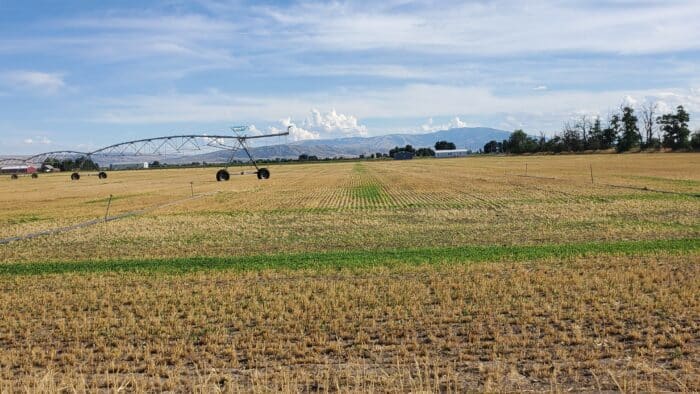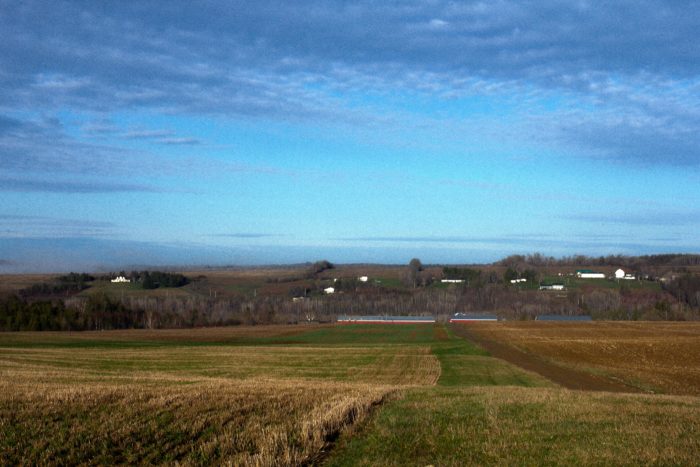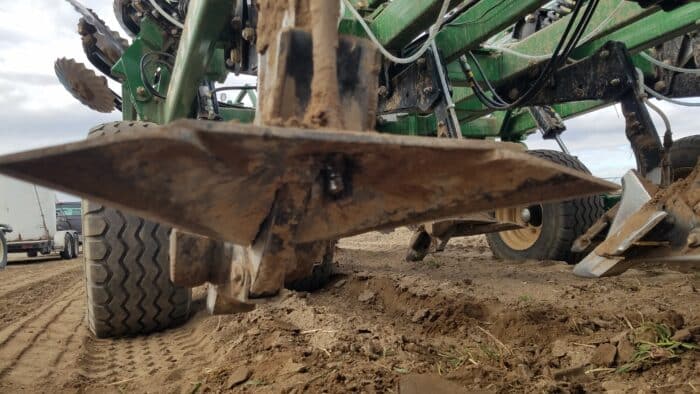Prepping your potato fields for planting in the fall can save you time and money come springtime.
Experts


Editor’s note: This interview has been edited for length and clarity.
Spud Smart (SS): When should potato field preparation start?
Jeff Miller (JM): I do think that when you’re going to plant potatoes the following year, it really does start quite early. We have to think about this when we’re growing the previous crop and before we’ve actually even harvested it.
I was planning to plant potatoes next year in a wheat field. Prior to drying down the wheat, we want to sample for nematodes while the crop is still growing and still healthy, and before the soil dries out. That’s going to give me a sense for what nematodes might be there the following year.

After I’ve done that, there’ll be all kinds of different things needed and to follow the groundwork to prepare, I also need to think about the residue — the previous crop… If that isn’t dealt with or managed some way that will cause really poor potato growth the following year, so we have to do things to manage the residue.
To do this we have to use water. We want to sprout any remaining seed. In some cases, we may have salt buildup in the soil that we want to leach down and get it out of the root zone. But we don’t always have access to that water where we’re at… So here, when I’m in August and September, when I’m trying to get the ground ready to go into winter, sometimes I have to apply a fair amount of irrigation.
There are multiple cultivations that we may do to take care of the residue. We may also fumigate, then we’ll also want to mark out the rows in the fall, so that the field is ready to plant as soon as possible the following spring.
SS: Why is it worth doing fall tillage work?
JM: With the fall tillage, it’s really important that we get the residue incorporated. Oftentimes, fertilizer will also be applied at this time — and this varies, I wouldn’t say there’s one standard practice.
Many times, growers are not adding fertilizer just in case things change, and they decide not to use a certain field for potatoes. The level of uncertainty sometimes will prevent fall fertilizer applications. But there is some that is made.
We also will do cultivation to break up any compacted soil layers . This will vary depending on the crop that was grown before. But we also want to improve water infiltration.
We also want to mark out the rows in the fall. This allows any freezing and thawing that will occur through the winter to help loosen up that soil. Fall mark out also allows you to plant it as soon as possible, eliminating a spring cultivation.
Manphool Fageria (MF): Spring is very busy time for the year for a grower, it can be a big relief for them if they can complete the field preparation work in the fall. This way the growers will be more efficient in timely planting of not only potatoes, but grains as well in the spring.

We noticed that hills prepared in fall dry faster than smooth ground or recently prepared ground. We have also learned that if we can plant our potatoes timely and earlier in the season, especially long season varieties like Russett Burbank, we can harvest five to 10 per cent more yield. Therefore, timely and early planting is very important for us to get higher yield for longer season potato varieties.
SS: How should fields with cover crops be prepared??
MF: Before preparing the field, we need to terminate our existing crop. So, how we terminate our crop and how we prepare the field at the Farm the Future is we terminate our existing crop by using a flail mower and then incorporate their biomass to the upper surface of the soil using a chisel plow. At the Farm of the Future, we have completely stopped using the moldboard plows.
Sometimes we have to make two passes of chisel plow to terminate the crop, which is not only quite expensive, but disturbs the soil twice. And we want to minimize soil disturbance. We are in the process of evaluating different methods of terminating existing cover crops before making the hills. These methods include a first pass of Kvick Finn and the second pass of chisel plow, then two passes of chisel plow or termination using glyphosate followed by one pass of chisel plow.
Once the field is prepared, we make our hills using the basket hiller. Hilling and seeding of cover crop is done simultaneously in the one pass.
SS: How did potatoes perform in the fields where fall ridging was done with cover crops planted?
MF: The potatoes planted through hills shows excellent performance of potato crop. In New Brunswick definitely we are lucky so far that we have received high heat units and good rain this season.
Additionally, we planted whole seed of potatoes instead of cut seed, which resulted in high set off uniform tubers. In North America, most of the growers plant cut seed but if you go to Europe, growers plant the whole seed and we encourage our growers to plant the whole seed rather than the cut seed.
SS: When should fumigation be done?
JM: Fumigation in my area is typically done using ripper shanks and they may be quite deep. The disc ripper is typically going in 15 to 18 inches, whereas with a disk the depth is closer to six-to-eight-inches. During fumigation, the shank depth may be close to 15 inches, but the fumigation injection depth may be around nine to 10 inches deep.
And then after I fumigate, I will typically wait three weeks to mark out rows. The metam sodium label says to wait 14 to 21 days between application and planting. We want to wait as long as possible to disturb the soil so that we keep the fumigation down in the soil, and we’ll wait at least three weeks. After that we’ll mark out our rows.
SS: What are the effects of fumigation on soil?
JM: There’s no doubt that fumigation is hard on the soil. And I would say I don’t know of anybody who enjoys fumigating. If we can make it go away, I think it would be a wonderful thing. But it does offer some tangible benefits, and I think what gets lost in some of the messaging.
Some work that was reported in the American Journal of Potato Research in 2021… Carl Rosen and a group looked at multiple trials over multiple years and they measured the soil microbiology basically by the carbon dioxide release, over a 24-hour period.

And so, they had soils that were not fumigated and soils that received chloropicrin and metam sodium. And before anything had been done, all of them were releasing over 50 parts per million of CO2 per hour.
Now, once they applied the fumigants, then they had a significant drop in respiration in both the chloropicrin and the metam sodium. The drop was greater for metam than was for chloropicrin. Sometimes you’ll hear people say that chloropicrin is not as harsh on the soil health as metam, and from that standpoint, that’s true.
As the season went on, though, you saw an increase in both the chloropicrin and metam sodium. By the end of the season there was no difference in the respiration between the soil that had not been fumigated and those that had. Both metam and chloropicrin were similar by harvest. With fumigation you are taking out some of the pathogens and you are taking out some of the good guys if you will, but they do come back.
Related Articles
Getting Your Potato Field Ready for Winter – A Spud Smart Roundtable Webinar & Podcast
The Regenerative Ag Debate for Growing Potatoes, is it Possible?










